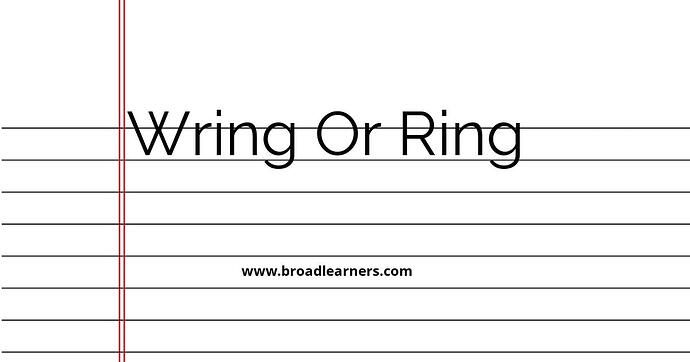'Wring' and 'ring' are commonly confused words in English grammar. Understanding the difference between 'wring' and 'ring' is important to use them correctly in written and spoken English.
'Wring' is a verb that means to twist or squeeze forcefully. It is often used to describe the action of twisting or squeezing something to remove water or extract liquid from it. 'Wring' can also be used figuratively to describe causing pain or distress to someone emotionally.
'Ring' is a verb that means to make a clear and resonant sound, usually by striking or vibrating a bell or other metal object. 'Ring' can also refer to the act of making a phone call or contacting someone using a telephone.
Let's take a closer look at the meanings and usage of 'wring' and 'ring'.
| 'Wring' | 'Ring' |
|---|---|
| The word 'wring' is used to describe the action of twisting or squeezing forcefully. | The word 'ring' is used to describe the action of making a clear and resonant sound or contacting someone. |
|
|
To remember the difference between 'wring' and 'ring', it can be helpful to think of the specific actions associated with each word. 'Wring' involves twisting or squeezing forcefully, while 'ring' involves making a clear and resonant sound or contacting someone.
Here are some examples of correct usage:
- She wrung out the wet clothes before hanging them to dry.
- The phone rang just as I was about to leave the house.
- He wrung his hands in frustration when he realized his mistake.
- I need to ring my parents to let them know I arrived safely.
Remembering the correct usage of 'wring' and 'ring' will improve your grammar and communication skills.
